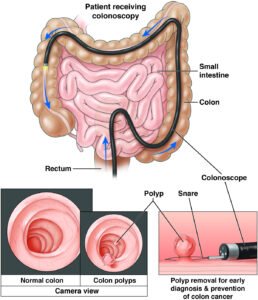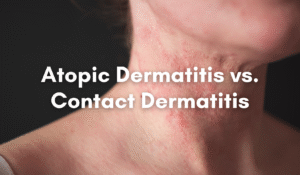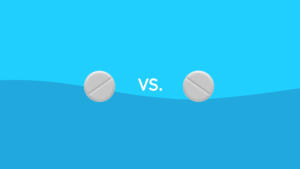Photosensitivity Reaction to Medications
Understanding Photosensitivity and Its Triggers
Photosensitivity refers to an abnormal skin reaction, typically a rash, triggered by exposure to ultraviolet (UV) rays from the sun or artificial light sources. This condition affects approximately 1 in 100 individuals and can be induced by various agents, including medications, perfumes, cosmetics, and even sunscreens meant to protect the skin. The reaction can occur in both warm and cold climates, often after minimal sun exposure.
Types of Photosensitivity Reactions
Photosensitivity reactions are primarily categorized into two types: phototoxic and photoallergic. Each has distinct characteristics and mechanisms.
Phototoxic Reactions
Phototoxic reactions constitute about 95% of photosensitivity cases and are directly linked to the dosage of certain medications and the level of UV exposure. In these reactions, drug molecules absorb specific UV wavelengths, undergo a chemical transformation, and release energy that damages surrounding skin tissues. Symptoms typically appear rapidly, often within 24 hours of the first dose and sun exposure. Common signs include intense redness resembling severe sunburn, accompanied by significant tenderness. High doses of certain drugs may also cause blisters, swelling (edema), or hives (urticaria). Symptoms generally subside within 2 to 7 days after discontinuing the medication. Medications commonly associated with phototoxicity include:
-
Nonsteroidal anti-inflammatory drugs (NSAIDs)
-
Diuretics
-
Antibiotics
-
Tricyclic antidepressants
Photoallergic Reactions
Photoallergic reactions occur when a topical agent, such as a cream, sunscreen, or ointment, interacts with UV light, binding to skin proteins and triggering an allergic response or eczema-like rash. These reactions may develop 1 to 10 days after initial exposure but can reoccur within 24 to 48 hours upon re-exposure. Unlike phototoxic reactions, photoallergic responses may affect skin areas not directly exposed to sunlight and can be triggered by even small amounts of the offending agent.
Medications Linked to Photosensitivity
Several classes of medications are known to increase the risk of photosensitivity reactions. Below is a comprehensive list of commonly implicated drugs:
-
Antibiotics: Ciprofloxacin, Levofloxacin, Minocycline, Tetracycline, Sulfonamides, Doxycycline
-
Disease-Modifying Anti-Rheumatic Drugs: Sulfasalazine, Methotrexate, Hydroxychloroquine
-
NSAIDs: Piroxicam, Ibuprofen, Naproxen
-
Antihypertensives: Captopril, Diltiazem, Methyldopa, Nifedipine
-
Hypoglycemics: Glyburide, Glipizide
-
Antidepressants: Amitriptyline, Imipramine, Desipramine, Nortriptyline, Doxepin, Trazodone
-
Diuretics: Chlorothiazide, Hydrochlorothiazide, Furosemide
-
Retinoids: Acitretin, Isotretinoin
-
Antihistamines: Diphenhydramine and others
Preventive Strategies for Photosensitivity
For individuals taking photosensitizing medications, minimizing sun exposure is critical. When outdoor activities are unavoidable, adopt the following protective measures:
-
Limit Exposure: Reduce time spent outdoors, avoid peak sunlight hours (10 a.m. to 4 p.m.), and choose appropriate clothing.
-
Protective Clothing: Wear long-sleeve shirts, long pants or skirts, wide-brimmed hats, and UV-blocking sunglasses.
-
Sunscreen Use: Apply broad-spectrum sunscreen with SPF 30 or higher. Opt for products containing physical blockers like zinc oxide or titanium dioxide for enhanced protection.
-
Monitor Medications: Consult with a healthcare provider about the photosensitivity risks of prescribed or over-the-counter drugs.
While these precautions significantly reduce the risk, they do not completely eliminate UV exposure, so vigilance is essential.
Conclusion
Photosensitivity is a manageable condition with proper awareness and precautions. By understanding the types of reactions, recognizing associated medications, and implementing preventive strategies, individuals can minimize the risk of adverse skin reactions. Always consult a healthcare professional if you suspect a photosensitivity reaction or need guidance on managing medication-related risks.
💡 Frequently Asked Questions
⭐ Expert Tips
- Include seasonal or trendy variations to keep your meals exciting.
- Highlight prep shortcuts or time-saving techniques for busy cooks.
- Consider dietary restrictions and include substitution suggestions.
✅ Key Takeaways
- These dinner ideas are perfect for impressing guests or enjoying special occasions.
- Choose recipes that match your skill level and available kitchen tools.
- Presentation and taste both contribute to a memorable dining experience.
📣 Join Our Community
Want more inspiration like this? Subscribe to our newsletter for weekly dinner ideas and cooking tips!





